(Continues from part 1 of this series on Norway.)
I slept pretty fitfully that night, and not for very long. The sun had just from one corner of the sky to the other and my brain was confused.
After an uninspiring breakfast (don’t worry, it gets better from here), we packed up and began the hike out.
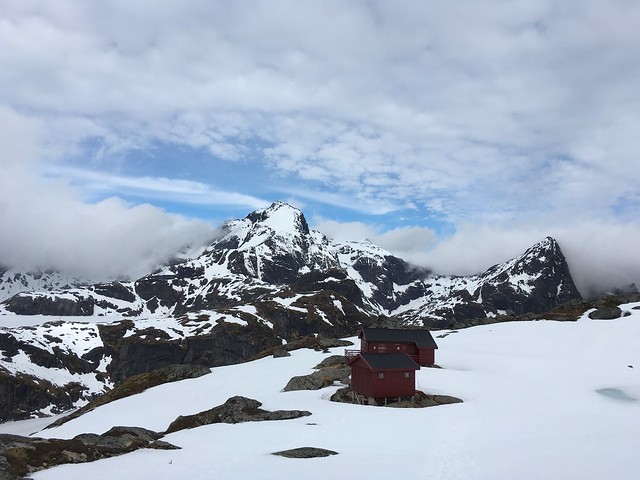

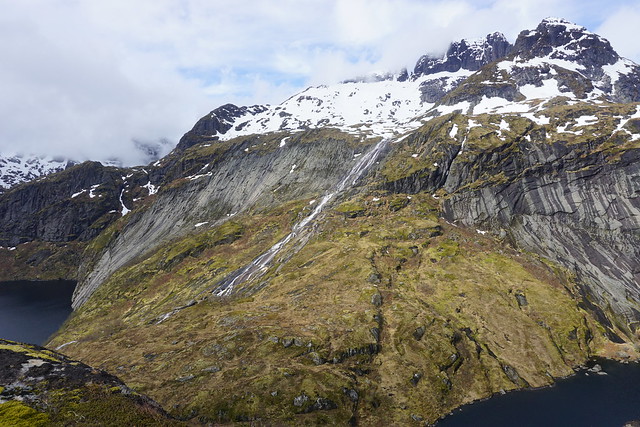
The morning sun lent some spirit to the backdrop, but by the time we reached sea level, doom-and-gloom was back.

About 1pm we dragged ourselves the 2km down E-10 through Tind, to the end of the road – the town of Å (pronounced “O”). I don’t know why the tourist websites make such a big deal out of it. It was just a tiny town with hardly any people. Perhaps it was just my state of mind, but between a very painful Achilles tendon, the dismal weather, and having finished my last fig bar, it was Å letdown.
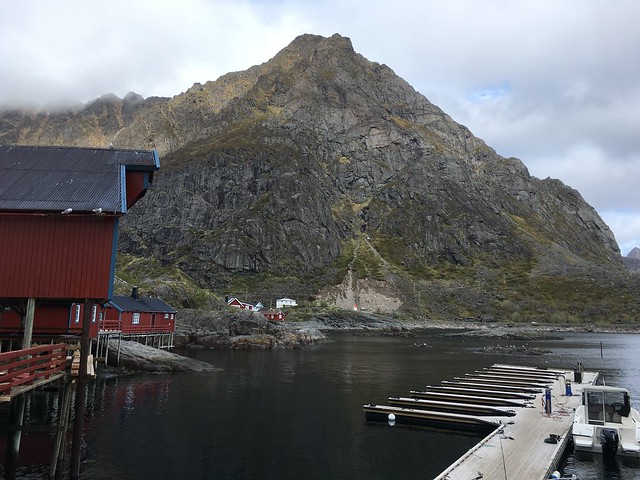
Fortunately, things were about to get better. In fact, I was about to have the most scenic few hours of my life. We spent an hour waiting at the bus stop at Å. There had been a landslide, leading to delays. The bus service that runs the length of the E-10 is also a school bus service and we took a short detour to the school.
As we headed East, the clouds relinquished their grip and the Sun burst forth into the crisp Arctic air. We disembarked at was is surely the gas station with the best view in the world.
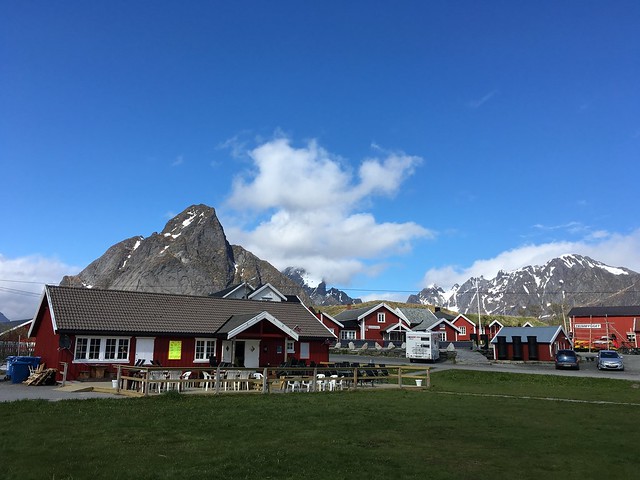
Everything about the place was so inviting and comforting. Reinebringen and Olstinden towering over the sea, the tiny red houses under a warm sun, the burger and chips I ate at the gas station. My mood was on cloud 9.
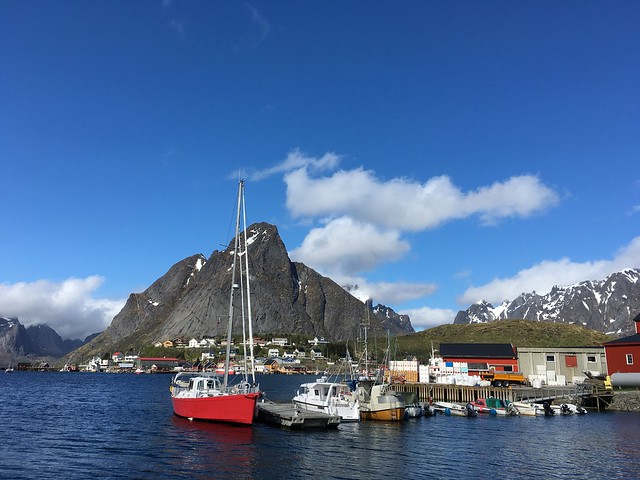
Shreya’s was more on cloud 8 since she couldn’t find anything she wanted to eat.
The towns of Reine and Hamnøy are very idyllic.
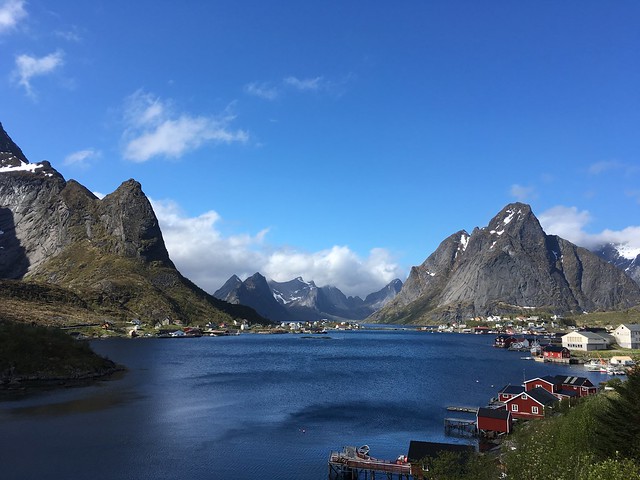
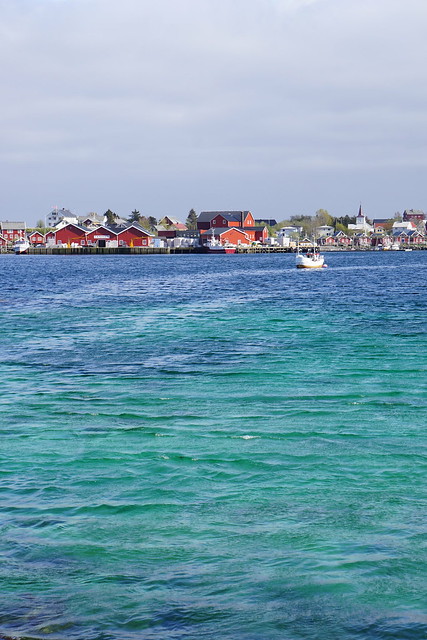
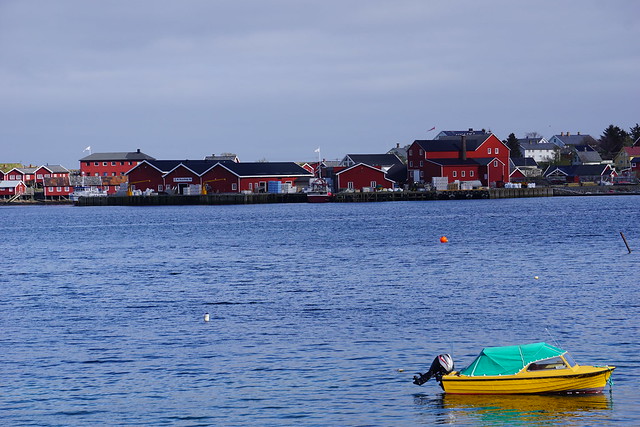
We had to make our way to the village of Hamnøy, about 4km away. Although exhausted, we also didn’t want to wait another hour for the bus, plus it was a gorgeous afternoon (have I made it clear yet?). I was hobbling the whole time, but wasn’t complaining too much because the views kept me distracted. All of this in just 2km of walking!
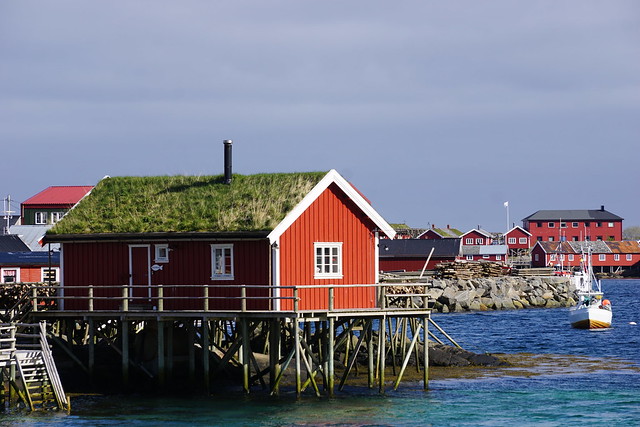
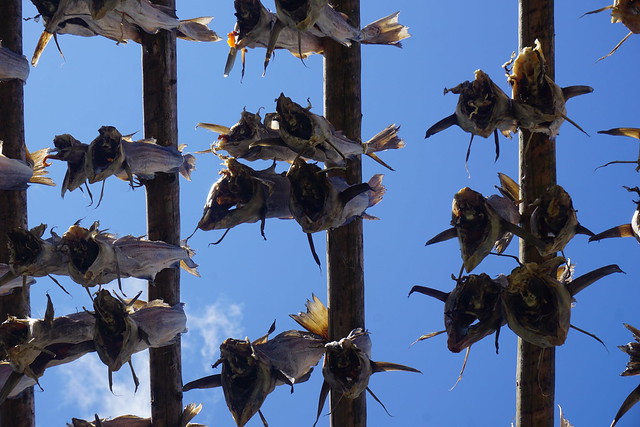
Reine sentrum is on a little outcrop that is connected to the main island only on the west. As we wanted to go east, we spent nearly an hour walking roundabout to get to the Coop market. Here we stocked up on more pasta, some fruits, eggs, and chocolate. I also bought a snack size pack of the famous stockfish.
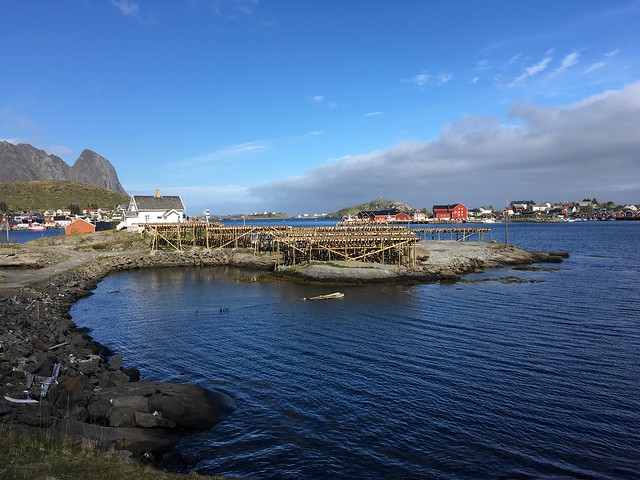
By the time we got to Eliassen Rorbuer in Hamnøy, we were saturated on deep blues. The rorbu are exceedingly cozy. There is a kitchen and dining space as you enter, a living room through a door, and a staircase which leads to the attic bedroom. Everything inside is very Scandinavian – clean lines and sharp finishes. The windows are tiny to keep the light out. The kitchen was well stocked with cooking essentials, including uncooked pasta. We ended up with too much pasta and tomato soup for dinner. Fortunately, they’d kept dark chocolate squares to wash things down.
I must say, stockfish “jerky” is not to my taste.
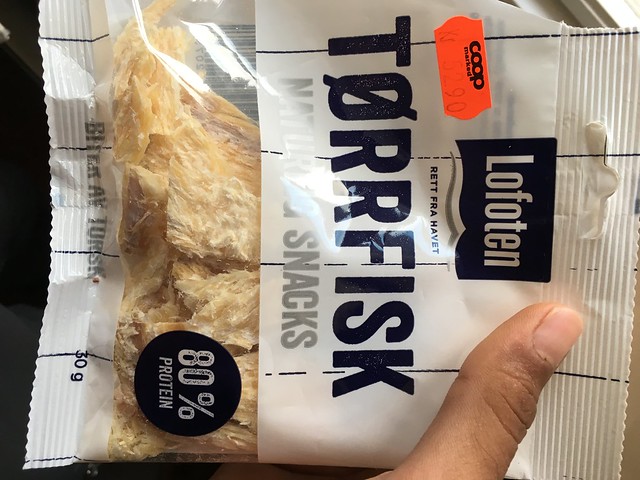
That afternoon walk and the stay in the rorbu easily makes the list of top moments in my life. Everywhere you looked was a world-class view. Eating dinner while Olstinden towered above was out of this world.
Eventually the sleep deprivation of the last 2 days hit like a train-wreck and I slept for 10 hours. With the deficit paid off, we were ready for adventure again. You’ve to pay to play, and that means cleaning the rorbu! The clouds were back and it was drizzling by the time we checked out. We spent some time in the waiting area, where a Polish guy joined us. He had spent his whole time in the Lofoten lugging around a suitcase with a quadcopter in it!
Quick note: While there is a westbound bus stop right outside Eliassen Rorbuer, the eastbound stop is a kilometer east.
It is an hour’s ride to the town of Leknes. I didn’t pay much attention to the subdued scenery as we crossed over to the island of Vestvågøya. Leknes is the second biggest town in the Lofoten, and has stores and offices and traffic lights and things.
We’d decided to use the next 24 hours to explore the parts of Lofoten the buses don’t go to. Since wild camping is allowed anywhere reasonable in Norway, we figured we’d rent a car and make plans as we went. After all, there was no threat of darkness looming over us.
We picked up an Opel Corsa from Hertz (~$55). First order of the afternoon was Uttakleiv Beach, north of Leknes. Driving on Lofoten is nothing like California, the roads are narrow, you have to pull out to the side several times to let buses go by, and the tunnels are massive. Stick shifts are the default, so make sure you can drive one!
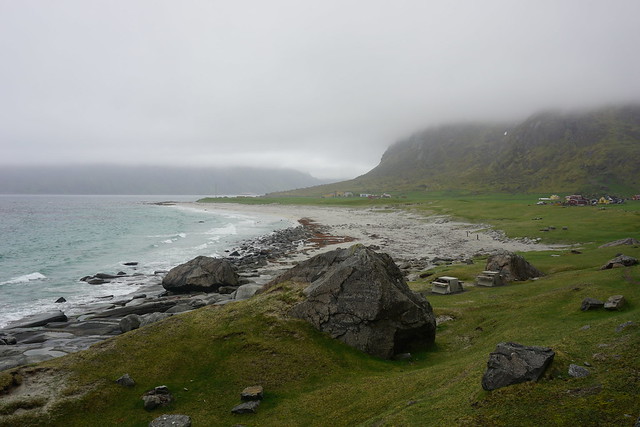
We made it to Uttakleiv by way of Haukland and both were windy and foreboding. Leave it to a Norwegian lady to go jogging on the beach at such a time. I’d rather be eaten by a troll.
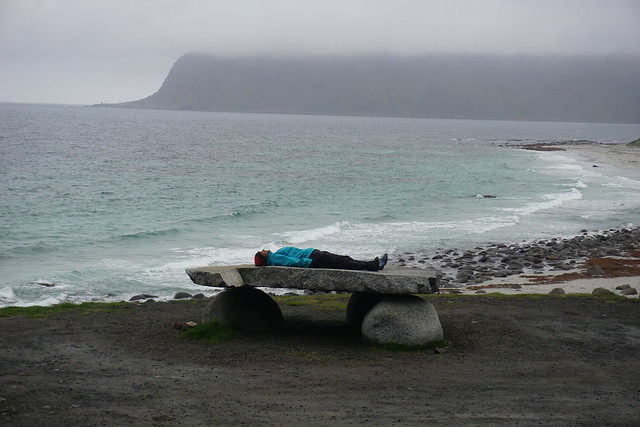
But seriously, the beach was beautiful. Just knowing that beyond this was nothing but the Arctic ice, added a visceral quality to the landscape.
We drove to Ballstad, which I wouldn’t repeat in the future because there isn’t much there. All the small towns in the Lofoten look the same, so you are better of going to the beaches and mountains. I did buy a bottle of mineral water from the store here. Bad idea!
It was about 5:45 when we looped back to Moskensøya and made our way to Fredvang. Fredvang is a small town north of the E-10 that connects to it via two Hobbit bridges. We dropped off some French hitchhikers, then proceeded west.
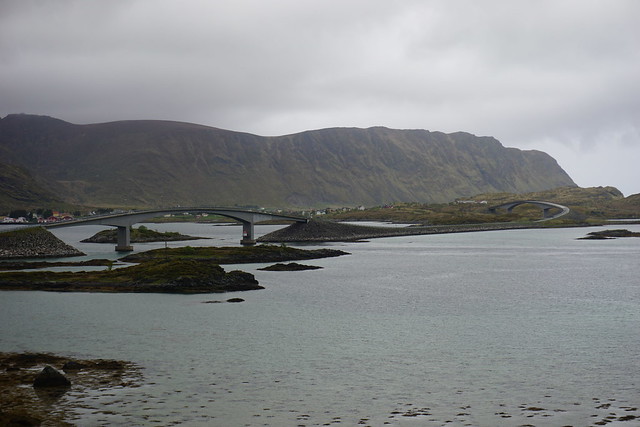
We were here in search of Kvalvika Beach, which Cody Duncan highly recommends. A small patch of pristine white sand, surrounded by 2000ft cliffs, Kvalvika is a delight in sunny weather, and mystical in the rain. The approach is muddy, but well worth it. The pictures don’t do it justice.
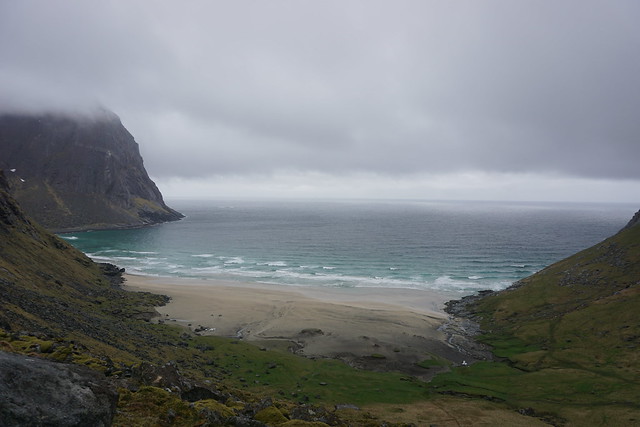
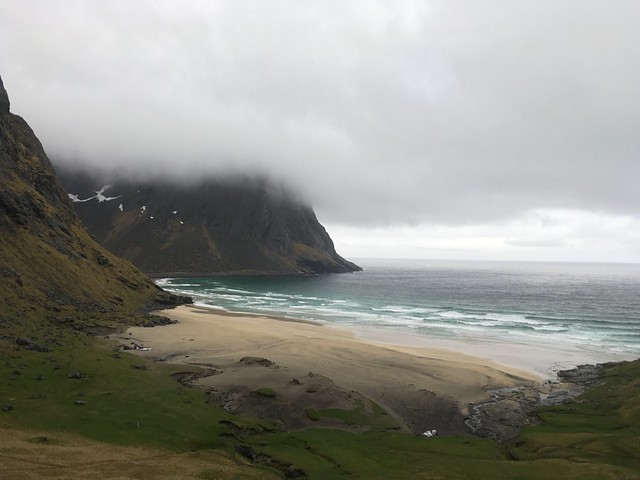
Remember that water I bought? Turns out it was sparkling :/

By the time we got back to the car, it must’ve been 9pm. It was time to find a campsite. While there were a few paid campgrounds on the E10, none of them looked very inviting. Instead we drove towards Nusfjord and found a pull out close to Storvatnet.

The next day the weather remained dismal, so it was a “get through it” day. We went to the Lofotr Viking Museum, which had some cool artifacts. It also had the cheesiest documentary I’ve seen. From there it was back to Leknes to return the car. We grabbed a sandwich from a bakery, then took the bus to Svolvær. This is the biggest town in the Lofoten (Population: 4,487), but there isn’t anything to do really. We took a short bus ride to Henningsvær. It has some quirky art but otherwise it is a sleepy town. It seems Henningsvær is the center for climbing in the Lofoten, so I may come back later.
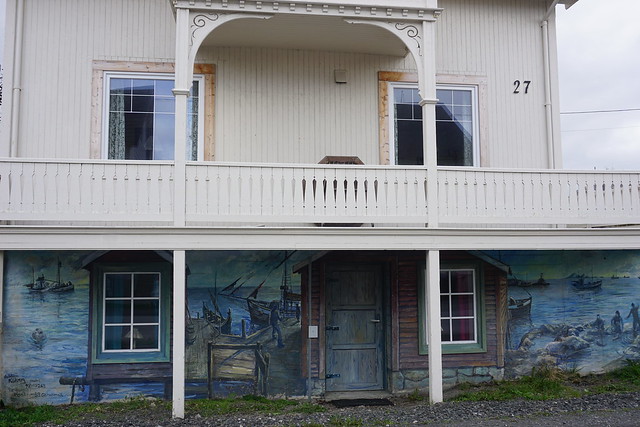

We had dinner at Viva Italia in Svolvær; completely average. We still hadn’t figured out accomodation for the night. Turns out that Svolvær doesn’t really have any campgrounds within city limits and all the hostels were booked. We had to catch a 6:30am ferry the next day, so taking the bus to somewhere farther away was not an option. Fortunately we got a last minute room at the Fast Hotel Lofoten for <USD100.
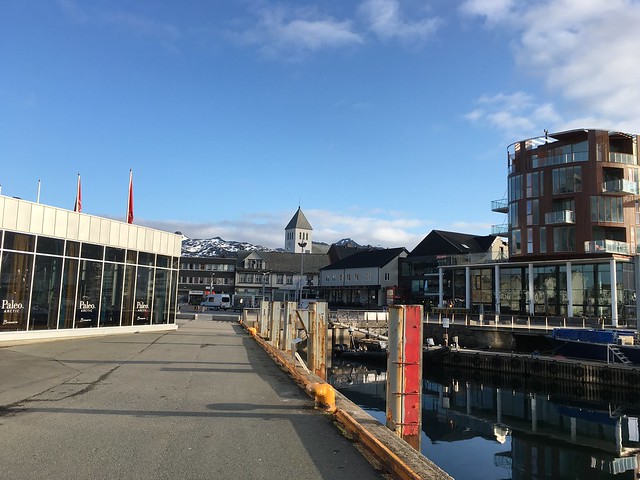
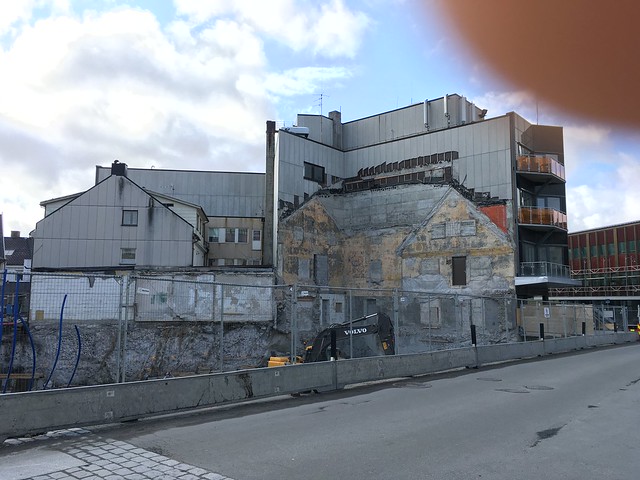
That concluded our Arctic experience. Lofoten was spectacular and I would love to go back. Do plan on going there with plenty more time. I would say, plan for rain at least half the time. Which means instead of rushing through, expect to stay 10-15 days. This gives you 5-7 days to enjoy the outdoors (hiking, backpacking, kayaking, climbing) and the rest of the days you can curl up to read in rorbu, RV or tent. That is what I intend to do. Getting there is slow and complicated, so you may as well make the most of it. Plus, they have great Internet access, so if you can work remotely, things will work out great.
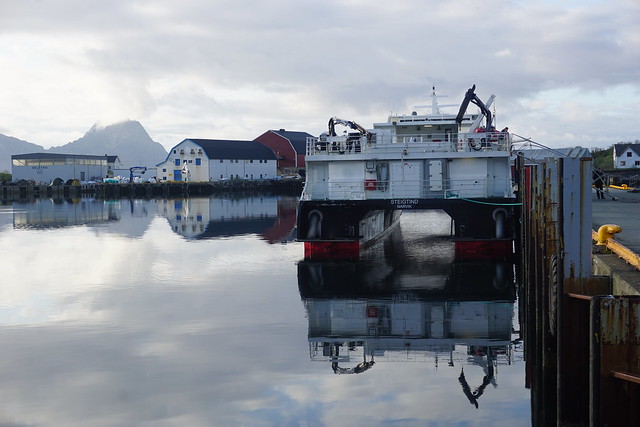
We took the M/S Steigtind, an express boat that makes several stops on the way back to Bodø. Again, Wi-Fi on the boat! How do these Scandinavians do it? Approaching Bodø, we were greeted by a set of F-16s on a training run.
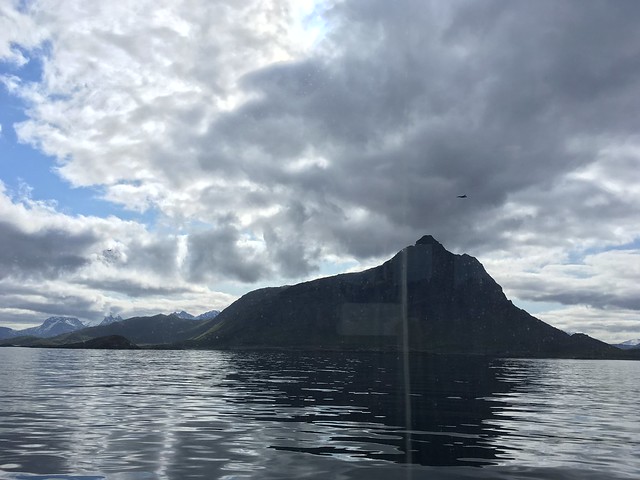
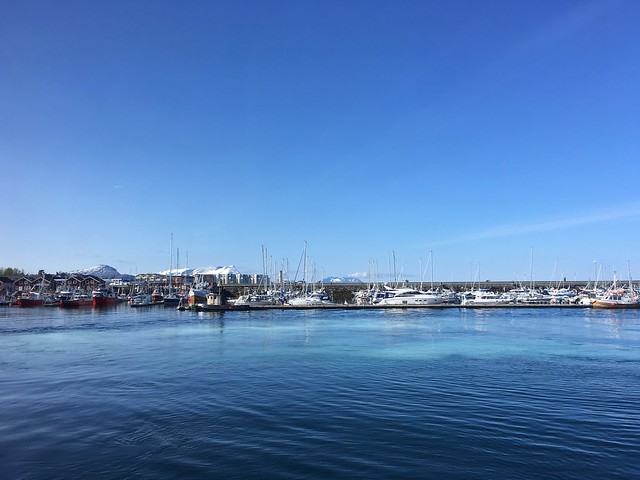
From Bodø, we flew Widerøe to Bergen. They have discounted youth tickets, which let me fly in USD106!
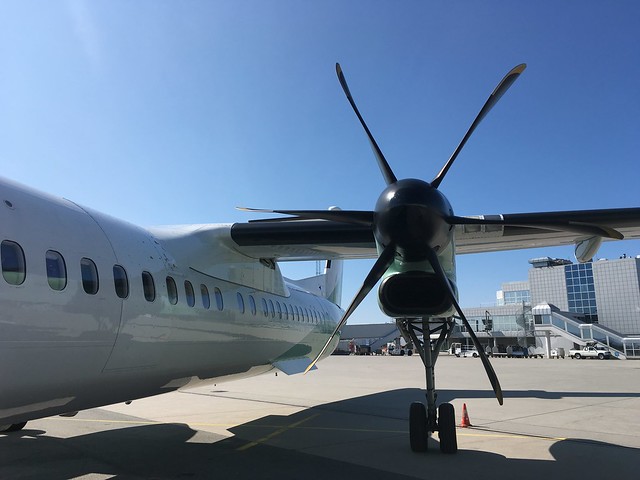
Flying out of Bodø was just as beautiful as before. It doesn’t seem like a bad place to live at all.
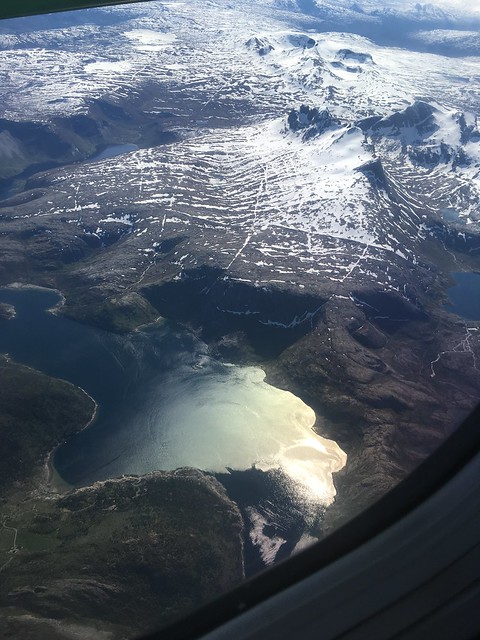
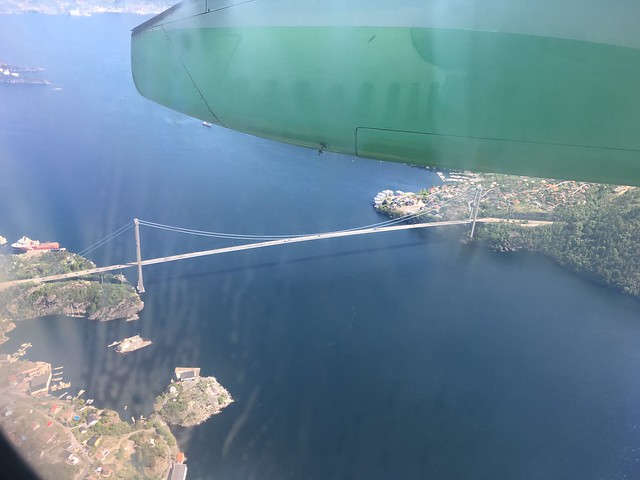
Approaching Bergen we re-entered the bustle of the modern world. The freeways were busy, hundreds of boats moved in the fjords and large settlements were carved out between the sea and the mountains. Tourists were everywhere. It was time to see the better known parts of Norway.